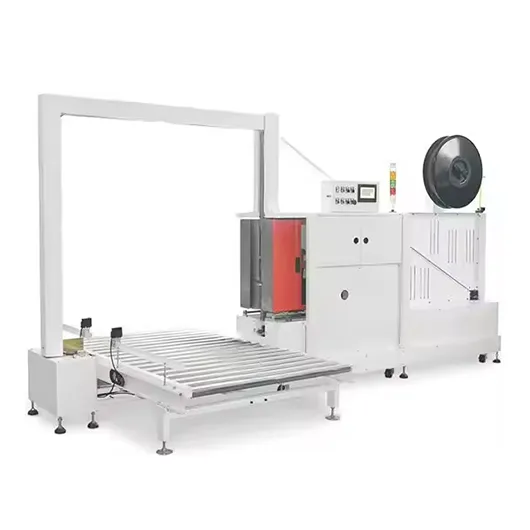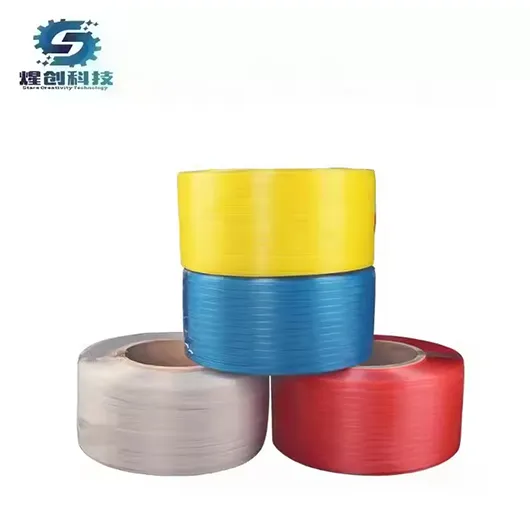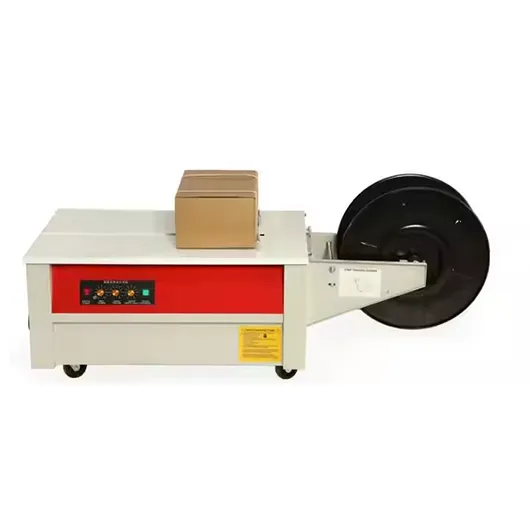Avoid your inquiry is delay response, please enter your WhatsApp/Skype along with the message, so we can contact you at the very first time.
We will reply you within 24 hours. If for urgent case, please add WhatsApp/WeChat: ,. Or call directly.
An automatic strapping machine automates the process of securing packages with straps, making it quicker, more efficient, and requiring minimal human intervention. It’s a key tool in packaging industries.
An automatic strapping machine applies a strap around a package and seals it to ensure the product stays secure during transport. By automating this process, it improves packaging efficiency and consistency.

To fully understand how these machines work, it’s important to explore the process of strapping, how different types of machines function, and what makes them efficient for various packaging needs.
Strapping is a crucial step in securing packages. It involves wrapping a material around a product, tightening it to ensure stability, and then sealing it to prevent the strap from loosening.
Strapping involves wrapping a material like polyester, polypropylene, or steel around a product, applying tension to ensure it’s secure, and sealing the strap for stability.
The first step in the strapping1 process is placing the strap around the product. The strap must be positioned properly to ensure it holds the product securely.
Once the strap is in place, tension is applied to make sure it’s tight enough to hold the product firmly without causing damage. This step is crucial for preventing any movement or shifting during transport.
Finally, the strap is sealed to secure it in place. Depending on the machine, this can be done with heat, friction, or metal clips. The strap is then cut to the correct length.
Automatic machines streamline all of these steps, making the process faster and more consistent, especially for high-volume production.
PVC strapping machines are easy to use and efficient. They apply a PVC strap around a package, tighten it, and seal it in place, ensuring secure packaging with minimal effort from the operator.
To use a PVC strapping machine, you load the strap into the machine, position the package, and let the machine do the rest. It will automatically apply tension, seal the strap, and cut it.
The first step in using a PVC strapping machine is feeding the strap into the machine. This is done manually, but the machine handles the rest of the process automatically.
Once the strap is in place, the product must be positioned properly to ensure the machine applies the strap in the right place. This step requires minimal effort, and the machine guides the process.
Once the product is in place, the machine will automatically apply tension to the strap. After tensioning, the machine will seal the strap using heat, and the final step is cutting the strap to the correct length. The whole process is fast, reducing human error and improving consistency.
PVC strapping machines are widely used due to their efficiency and cost-effectiveness. They’re ideal for a variety of industries, including logistics and retail.
Strapping is an essential technique to ensure products remain secure during shipping. It involves using a strap to wrap around a product, tightening it, and sealing it in place to prevent shifting or damage during transport.
Strapping works by wrapping a material around a product, applying tension2, and sealing the strap to hold the product securely in place.

The process starts by wrapping the strap around the item. This ensures the strap will encircle the package and prevent it from shifting.
Once the strap is wrapped, tension is applied. This is the key step in ensuring the package is tightly secured. The tension must be just right—not too tight to damage the product, but tight enough to hold it in place.
After tensioning, the strap is sealed to ensure it doesn’t loosen. Heat-sealing is the most common method, where the ends of the strap are heated to bond them together. Once sealed, the strap is cut to the desired length.
Strapping is essential for protecting goods during transportation, and automatic strapping machines streamline this process, saving both time and labor costs.
A semi-automatic strapping machine is a hybrid option that combines the speed and efficiency of automation with the flexibility of manual operation. It requires some operator involvement but automates key parts of the process, such as tensioning and sealing.
A semi-automatic strapping machine requires an operator to feed the strap into the machine, but it automatically applies tension, seals the strap, and cuts it.

The operator starts by placing the strap into the machine. The machine will take over the rest of the process, but the operator is still involved in this initial step.
The operator positions the product and feeds the strap into the machine. The machine then automatically tightens the strap, reducing the need for manual labor and speeding up the process.
The semi-automatic machine takes over the tensioning, sealing, and cutting steps. The operator only needs to perform the initial actions of positioning the strap. This saves time and reduces errors, but still requires human involvement for setup.
Semi-automatic strapping machines are a cost-effective option for businesses that don’t need fully automated systems but still want to improve packaging efficiency3.
Automatic and semi-automatic strapping machines offer different solutions based on the packaging needs of a business. Whether you need full automation or just a boost in efficiency, these machines can help streamline the packaging process.
Understanding strapping is essential for ensuring package security and stability during transport. Explore this link for detailed insights. ↩
Learn why applying the right amount of tension is crucial for securing packages during transport. ↩
Discover effective strategies to boost your packaging efficiency and streamline operations. ↩